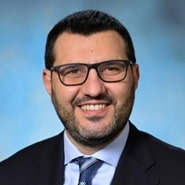The ability to pin down assets is a critical component of RTLS, but the true benefit is in leveraging the technology to provide visibility that’s “key to operational excellence,” said our panelists during a recent discussion. “You need to know where everything in your organization is moving.”
Q&A with Cook Children’s CTO Steve Eckert: “The most important thing is to listen and observe.”
One of many lessons Steve Eckert learned during his time in consulting? “I have a very high bar for what I expect from our vendor partners.” During a recent interview, he talked about the keys to maintaining healthy partnerships, as well as his core objectives as CTO at Cook Children’s, and the importance of being in lockstep with fellow leaders.
“We’re All Learning”: Q&A with Anna Schoenbaum, VP of Applications & Digital Health, Penn Medicine
One of the keys to meeting Penn Medicine’s core objectives – improving efficiency, reducing clinical burden, and delivering a better patient experience – is in establishing partnerships, said Anna Schoenbaum, VP of Applications and Digital Health. The other? Having “strong governance and engagement. That’s part of our DNA.”
Finding Clinical Informaticists, Part 2: “The Change Recipe”
“Clinical change management is a team sport that requires the participation of a large number of stakeholders,” according to Dirk Stanley, MD, CMIO at UConn Health. In the second of a two-part series, he aims to “dispel the misunderstandings and confusions” around the roles of applied clinical informaticist and clinical IT analyst.
“A Clear Vision”: How Leaders Are Bringing Enterprise Imaging Back into Focus
Finding Clinical Informaticists, Part 1: Shaking the (Informatics) Tree
“Start Listening”: Two Leaders on How Their Teams Overcame “Horror Stories” and Improved Outcomes
Email Security and the “Continuous Game of Whack-A-Mole”: Cyber Leaders Share Best Practices
Seeds and Soil: Recommendations for new Applied Clinical Informaticists, Part 2
When it comes to clinical informatics, some believe discussing details is “getting too into the weeds.” Dirk Stanley, MD, however, takes a different stance. “Clinical teams need you to care about the details, so that you can develop the complete blueprints that will help build great workflows,” he wrote in the second of a two-part series.
Q&A with URMC CMIO Gregg Nicandri: “We need to give our caregivers more information.”
“Nurses and doctors didn’t go to school to become data entry technicians; and yet, a lot times, that’s what we feel like we’re doing,” said Gregg Nicandri, MD. In this interview, he talks about how URMC is leveraging technology to offload some of the burden, and shares his thoughts on the evolving CMIO role and what it takes to successfully drive change.









